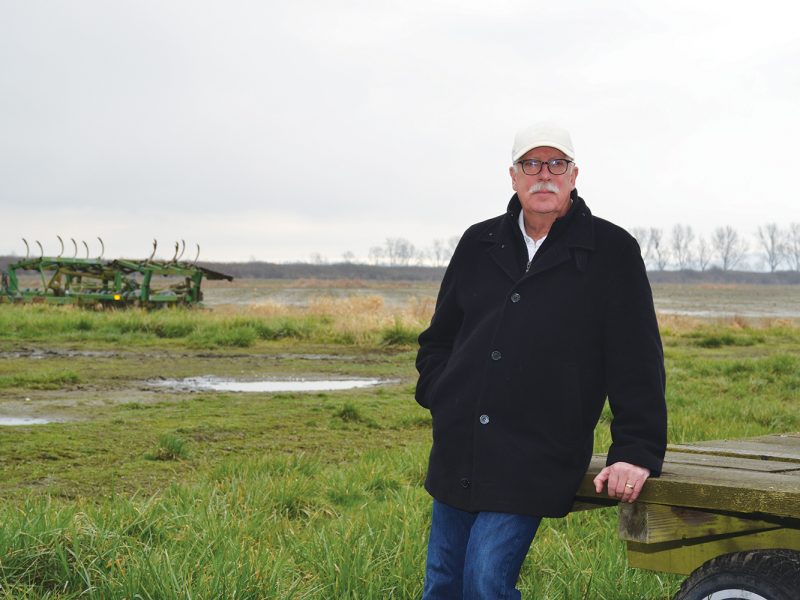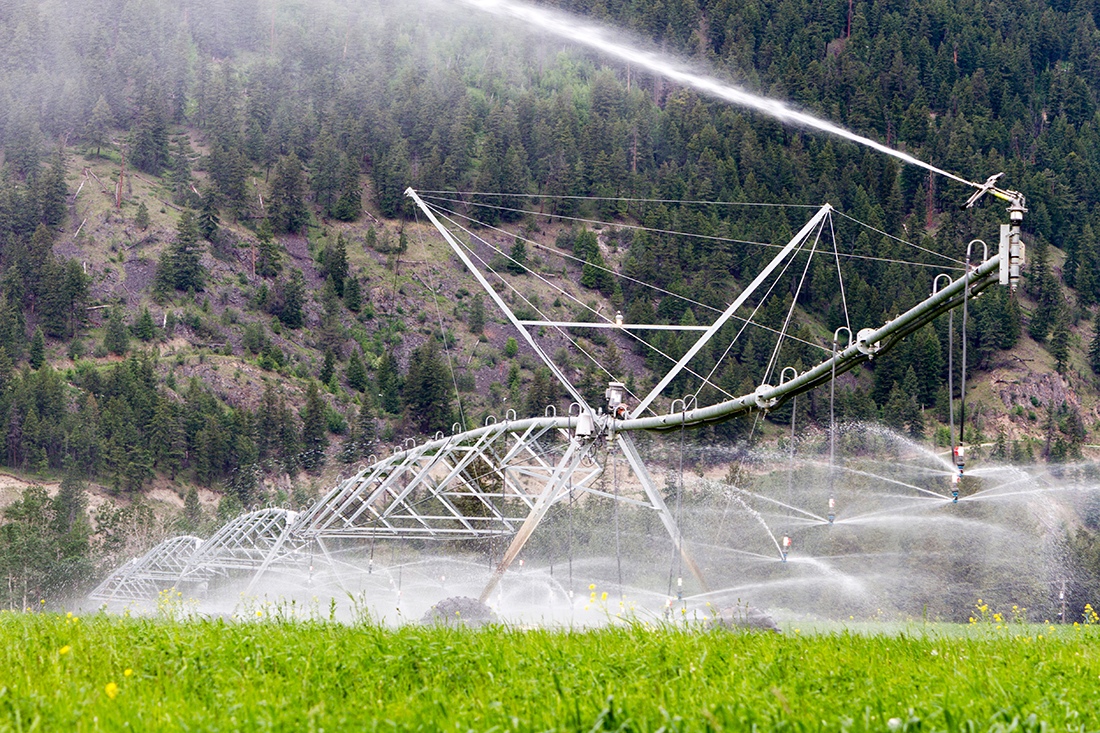DELTA – Jutting out into the Strait of Georgia, the rich soils of Brunswick Point are a gift of the Fraser River’s run south from its headwaters in the Fraser Pass of the Rockies. The longest river in BC, the deposits here encapsulate the wealth of the province – a wealth fundamental to the most valuable farmland in Canada.
But others see a different kind of wealth. In 1968, the province expropriated thousands of acres as backup lands for port development at Roberts Bank.
When the lands weren’t needed, most were leased back to the previous owners for farming and 43 were eventually sold with the original families having right of first refusal. But the four families at Brunswick Point – the Swensons, Montgomerys, McKims and Gilmours – didn’t enjoy this privilege.
The province’s treaty settlement with Tsawwassen First Nation allowed the families to continue farming and gave them the right to buy the properties, totalling about 600 acres. But if the families declined to purchase the properties, TFN would be first in line. The families reached an agreement with the province in 2011 that would see the lands remain in the Agricultural Land Reserve and covenants put in place preserving them for soil-based agriculture and migratory bird habitat, but that never happened.
This prompted Delta South MLA Ian Paton to introduce a private member’s bill in March to ensure this takes place, his third bid to ensure lasting protection for the properties.
“People are just crazily adamant about preserving our good-quality pieces of farmland,” he says, noting the headline-grabbing fight over the potential loss of 305 acres of federally owned land in Surrey where the Heppell family grows vegetables.
But the long-standing and lingering issue of Brunswick Point, double the size and equally important given the thousands of tonnes of potatoes harvested there each year and its national importance as a site of variety trials, has simmered under the radar.
The concern underscores the importance of the Agricultural Land Reserve as it turns 50 years old this month. Brunswick Point was included from the beginning, but the ongoing threat to its future means vigilance remains essential for the long-term protection of it and other key properties.
Land freeze
The invocation of the land reserve is a shift from 1972, when the newly elected NDP government of Dave Barrett moved to head off a rush of subdivision applications with a land freeze, followed by the imposition of a reserve for farming with a suite of measures that were supposed to ensure farmers – whose right to develop their properties as they saw fit was immediately curtailed – could remain profitable independent of capital gains on their real estate.
Described by this paper as “one of the greatest uproars in BC history,” even farmers who had initially supported the idea were outraged when the government began sharing details for the land reserve in January 1973.
Many growers remain bitter, even as they’ve continued to farm in spite or as a result of the restrictions.
Ken Ellison, a former dairy farmer who now raises beef in the Cowichan Valley, describes the ALR as “the biggest hit the government’s ever dumped on the farmers.”
“Over the years, we’ve dealt with that reduction in assets. We’ve moved forward,” he says. “And we made a decision to continue farming, but guess why we made that decision? Because the government told us we had to farm it.”
But the legislation, known as Bill 42, passed, and on April 18, 1973, the ALR was born.
Setting boundaries
Joan Sawicki joined the new Agricultural Land Commission as a technician that summer, spending 18 months working to finalize the reserve’s boundaries. Proposals submitted by the regional districts provided a starting point, and ALC staff ultimately designated 11.6 million acres for inclusion, or about 5% of the province.
“It was an exhaustive project,” says Sawicki, now in her late 70s. “Historically, agriculture was always seen as the poor cousin of resource ministries, and there was always a so-called higher and best use. The ALR said no, in this zone, growing food is the highest and best use.”
Unlike recent moves to manage groundwater, land use wasn’t bound to a particular crop. A grower’s options were kept open to allow farms to adapt to changing circumstances.
“The title of our first public brochure was Keeping the Options Open, and to me that’s what this is all about, for the whole 50 years,” she says. “It was never intended … that every hectare of the ALR needs to be farmed. But it’s the options. … As long as we have the land, farmers have the option to adjust.”
But those options shouldn’t be taken for granted, something she feels government is prone to doing.
“Most decision-makers have never known British Columbia without the ALR. They take it for granted,” she says. “We can’t take it for granted because it is vulnerable. Not only from landowners.”
Recent reports show that other government priorities continue to trump agriculture. Just last year, an order in council authorized the “temporary exclusion” of 251 acres for gravel extraction to supply the Site C dam project, following on the exclusion of nearly 6,860 acres in 2015 for the dam’s headpond.
In 2016, 2,065 acres were excluded under the terms of the province’s treaty with the Tla’amin First Nation.
Last month, the province ordered 150 acres in Richmond excluded for a private composting facility, reducing the area protected by the ALR to less than 11.4 million acres
Sawicki says attention also needs to be given to safeguarding the province’s foodlands as the province moves to address reconciliation with Indigenous peoples.
“We saw what happened in Tsawwassen,” she says, referring to the development of malls and warehouses on hundreds of acres of farmland removed from the ALR as part of the treaty struck with TFN. “Class 1 farmland is now one of the biggest shopping malls in North America.”
She sees a way forward in broadening the public understanding of how the land provides food.
“In our culture we tend to think of agriculture as crops that we plant,” she says. “But if part of our concept of meeting the challenge of reconciliation is ourselves expanding the concept of food … to embrace the other ways that the land produces food for humans, I think that’s a good thing.”
This is where Paton wants to see definitive protections for Brunswick Point, not to mention the 305 acres in Surrey currently subject to federal discussions with local First Nations.
“It would be fitting this year … that we make absolutely sure that these two prime pieces of agricultural land in Surrey and in Delta have a covenant put on them, that they remain agricultural land in perpetuity,” he says.
—With files from Kate Ayers


 Climate Change Adaptation Program winds down
Climate Change Adaptation Program winds down